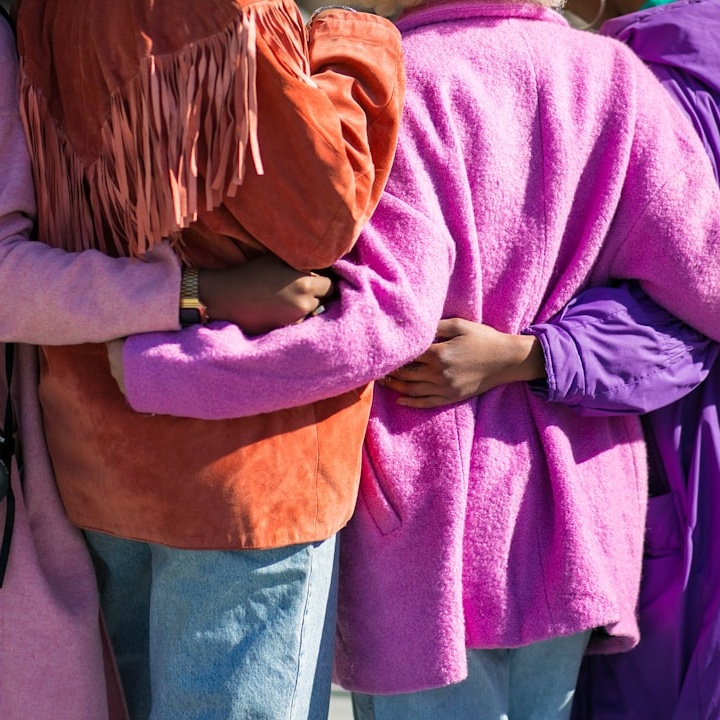
OUR GUIDELINES
Indigenous Ethics
is moral principles and values of indigenous communities.
It's time we consider a profound return to our indigenous ways, which offer sustainable, equitable, and harmonious solutions starkly different from the capitalist framework that dominates today.
It's time we consider a profound return to our indigenous ways, which offer sustainable, equitable, and harmonious solutions starkly different from the capitalist framework that dominates today.

Rhythm and Health
Medium of expression
for empathy
for empathy

Leadership
Shared Leadership

Stewardship
Sustainability

Community
Reciprocity
ExploreDive inDig inBe curiousI am convinced that if we are to get on the right side of the world revolution, we as a nation must undergo
a radical revolution of values.
We must rapidly begin the shift from
a 'thing-oriented' society to a 'person-oriented' society
a radical revolution of values.
We must rapidly begin the shift from
a 'thing-oriented' society to a 'person-oriented' society
~ Vinona LaDuke
Rhythm and Health
Rhythm and dance have played a profound role in human society, particularly in African communities. Rhythm and dance as essential mediums of expression that enhance community empathy, cohesion, and a deep connection to nature—fundamental to moral and social development.
These practices are not just cultural activities or performance arts, but vital components of education and societal health, from which concepts of citizenship and environmental awareness stem out.
Musical training can profoundly influence an individual's inner life and societal interactions, rhythm is a language of positive emotion, that has been practiced by indigenous societies for millennia, in cycles with the Moon and Sun.
In the era of capitalism, we observe a striking contrast between African communal music traditions and Western individualistic approaches, suggesting that African drumming, as a metaphor for society, emphasizes communal harmony and discipline over individual prominence.
Simultaneously, drumming and dancing is linked to health improvements, stress reduction, and enhanced community bonds, supported by various studies and expert opinions. It encapsulates how rhythm and dance function as incredibly powerful tools for personal and communal healing and development, making them invaluable to educational and therapeutic settings.
The transformative effects of peak experiences, which can emerge from rhythmic engagements such as drumming or dancing, can lead to a realization or vision of another level of existence, trance-like state, that bring greater self-awareness and respect for the body (Maslow, 1971).
The communal versus individualistic approaches to music, on example of African drumming as a social metaphor, illustrates, that in African traditions, the interplay of various drumming parts symbolize a harmonious community where each individual's contribution supports and enhances the group. This metaphor extends to the societal values of cooperation and unity, contrasting with the more individualistic, and often competitive, nature of Western musical practices.
In African societies, music and rhythm are not just for entertainment but are woven into fabric of community life.
Collective identity and mutual support become their side effects. This communal aspect creates a stronger, more cohesive social fabric compared to Western approaches that often celebrate individual abilities and can lead to social disintegration in group settings.
This analysis of rhythm and dance comes from the deep roots of indigenous wisdom and contemporary psychological understanding, which magically coincide.
Thus, Indigenous Way of Life incorporates rhythm and dance as essential aspects of it’s ethics.
References:
James, C.L. 1992. "Melodic and Rhythmic Aspects of Indigenous African Music." S.A. Jnl. Folklore Studies 1992 (3): 15-28.
"Rhythm & Health." Indigenous People, last modified 2022. https://www.indigenouspeople.org.uk/rhythm-health/.
Maslow, Abraham H. The Farther Reaches of Human Nature. New York: Viking Press, 1971.
Feitosa, S.F. (2015). Indigenous Ethical Perspectives. In: ten Have, H. (eds) Encyclopedia of Global Bioethics. Springer, Cham.
Rhythm and dance have played a profound role in human society, particularly in African communities. Rhythm and dance as essential mediums of expression that enhance community empathy, cohesion, and a deep connection to nature—fundamental to moral and social development.
These practices are not just cultural activities or performance arts, but vital components of education and societal health, from which concepts of citizenship and environmental awareness stem out.
Musical training can profoundly influence an individual's inner life and societal interactions, rhythm is a language of positive emotion, that has been practiced by indigenous societies for millennia, in cycles with the Moon and Sun.
In the era of capitalism, we observe a striking contrast between African communal music traditions and Western individualistic approaches, suggesting that African drumming, as a metaphor for society, emphasizes communal harmony and discipline over individual prominence.
Simultaneously, drumming and dancing is linked to health improvements, stress reduction, and enhanced community bonds, supported by various studies and expert opinions. It encapsulates how rhythm and dance function as incredibly powerful tools for personal and communal healing and development, making them invaluable to educational and therapeutic settings.
The transformative effects of peak experiences, which can emerge from rhythmic engagements such as drumming or dancing, can lead to a realization or vision of another level of existence, trance-like state, that bring greater self-awareness and respect for the body (Maslow, 1971).
The communal versus individualistic approaches to music, on example of African drumming as a social metaphor, illustrates, that in African traditions, the interplay of various drumming parts symbolize a harmonious community where each individual's contribution supports and enhances the group. This metaphor extends to the societal values of cooperation and unity, contrasting with the more individualistic, and often competitive, nature of Western musical practices.
In African societies, music and rhythm are not just for entertainment but are woven into fabric of community life.
Collective identity and mutual support become their side effects. This communal aspect creates a stronger, more cohesive social fabric compared to Western approaches that often celebrate individual abilities and can lead to social disintegration in group settings.
This analysis of rhythm and dance comes from the deep roots of indigenous wisdom and contemporary psychological understanding, which magically coincide.
Thus, Indigenous Way of Life incorporates rhythm and dance as essential aspects of it’s ethics.
References:
James, C.L. 1992. "Melodic and Rhythmic Aspects of Indigenous African Music." S.A. Jnl. Folklore Studies 1992 (3): 15-28.
"Rhythm & Health." Indigenous People, last modified 2022. https://www.indigenouspeople.org.uk/rhythm-health/.
Maslow, Abraham H. The Farther Reaches of Human Nature. New York: Viking Press, 1971.
Feitosa, S.F. (2015). Indigenous Ethical Perspectives. In: ten Have, H. (eds) Encyclopedia of Global Bioethics. Springer, Cham.
Leadership: Shared vs Hierarchical
Shared leadership is a collaborative and participative approach to governance and decision-making that contrasts sharply with more hierarchical systems. This model has the distribution of leadership roles and responsibilities among group members, rather than centralizing power in the hands of a few individuals. It creates a sense of collective responsibility, encouraging input from all members to guide the group’s direction and decisions.
Shared leadership has certain charachteristics:
Shared leadership is a collaborative and participative approach to governance and decision-making that contrasts sharply with more hierarchical systems. This model has the distribution of leadership roles and responsibilities among group members, rather than centralizing power in the hands of a few individuals. It creates a sense of collective responsibility, encouraging input from all members to guide the group’s direction and decisions.
Shared leadership has certain charachteristics:
- Collaborative decision-making: Decisions are made through consensus or significant group consultation, reflecting the collective wisdom and perspectives of all members.
- Fluid roles: Leadership roles are often interchangeable and not fixed, allowing different individuals to take the lead on initiatives for which they have specific skills or insights.
- Transparency: Communication within shared leadership frameworks tends to be open and transparent, facilitating a shared understanding of goals and methods.
- Empowerment: By involving more members in the leadership process, this approach empowers individuals, enhancing their commitment to the group’s objectives and their personal development within the community.
Indigenous Practices of Shared Leadership
Numerous indigenous cultures around the world have historically practiced forms of shared leadership.
The Haudenosaunee (Iroquois Confederacy)
The Haudenosaunee, a confederation of six Native American nations, is renowned for its sophisticated governance system, which heavily influenced the democratic ideals of the United States. Their system, known as the Great Law of Peace, distributed power across different clans and nations, with decisions made through extensive discussions aimed at reaching consensus. Leadership roles were defined by the community in a way that responsibilities and powers were balanced among the members, giving voices to everyone.
The Khoi and San of Southern Africa
The Khoi and San peoples traditionally practiced a non-centralized form of governance where decision-making was highly participatory and based on consensus. Leadership was typically situational and decision-making authority could shift depending on the issue at hand, ensuring that those with relevant knowledge or experience were involved in guiding the community. It means, that only experts would become leaders and only when there was a need. Strikingly, when colonialist came to South Africa, they were often frustrated by the absence of leaders in indigenous communities, and later on they would impose a leader, to simplify the process of control over the local population.
The Sami of Northern Europe
The Sami, indigenous people of the Arctic area, practiced shared leadership particularly in the context of their traditional semi-nomadic reindeer herding. Decisions about when and where to move herds were typically made collectively, taking into consideration the insights and experiences of the entire community to ensure the sustainability of their resources and the well-being of the community.
These examples illustrate that shared leadership in indigenous cultures not only facilitated effective governance but also reinforced social cohesion, ensured the sustainability of resources, and respected the voices and dignity of all community members. This form of leadership, highlights a profound understanding of leadership as a shared responsibility rather than a position of dominance.
_______________
Let's observe some nuanced complexities of leadership dynamics within indigenous societies, with a particular focus on the Khoi and San communities of Southern Africa. Historically known for their egalitarian social structures, they have experienced significant shifts in their leadership paradigms, which spans through colonialism into present democratic reality.
Hierarchical leadership, suckled by a Western man from the milk of his mother, is a structure fundamentally rooted in paternalistic principles that have been defined and refined through centuries of European historical and social evolution. This form of leadership emphasizes a top-down approach, where power and decision-making are concentrated in the hands of a few, often at the expense of the many. In such systems, authority flows downward, from the apex of power to the base, creating clear, often rigid, ranks and roles within organizations and societies.
The adoption of hierarchical leadership in various contexts across the globe—particularly in places where indigenous and more horizontally structured leadership systems prevailed—has frequently led to significant disruptions. These disruptions manifest not only in the erosion of traditional practices and norms but also in the disempowerment of those who formerly held meaningful roles within their societal structures, such as women and elders in many indigenous communities. The imposition of a hierarchical framework often imports not only a new structure of governance but also a set of values that may be alien or even antithetical to the native cultural ethos.
Moreover, hierarchical leadership tends to promote efficiency and clear lines of responsibility, which are often cited as benefits. However, these advantages can come with considerable costs, including reduced creativity and innovation due to the discouragement of input from lower levels, and a lack of responsiveness to actual people's needs. In the global discourse on governance and organizational management, it becomes imperative to critically assess these trade-offs, particularly in contexts where such structures are introduced or imposed without a nuanced understanding of the existing cultural and social dynamics.
The traditional leadership among the Khoi and San was characterized by shared leadership—a form that facilitated the co-participation of all community members in decision-making processes. This inclusive model ensured that both men and women had equitable influence over communal affairs. Historically, headmen or headwomen were pivotal in this system, serving as representatives who grew up in their communities, well-versed in the intricacies and needs of their people.
However, there has been a gradual yet profound transformation in the customary laws governing these communities. This transformation came with imposed hierarchical leadership and has not only diminished the power of headmen and headwomen but has also led to the disenfranchisement of women. The imposition of more hierarchical leadership structures, often influenced by external governmental policies, has diluted the traditional egalitarian ethos of Khoi and San governance.
The move towards a more centralized form of leadership, often vested in chiefs who lack the traditional and communal connections of former headmen or headwomen, signifies a breakdown in indigenous leadership. Such imposed structure not only distances female voices from the core of power but also disrupts the communal harmony by altering cultural tradition towards unhealthy Western model of CONTROL, as opposed to indigenous concept of COOPERATION.
The effects of these changes are profound, as they not only alter the leadership landscape but also affect the socio-cultural fabric of the community. Women, who once played a crucial role in leadership through relational influence and community engagement, find their roles minimized and their voices marginalized. The increased formalization of norms and leadership forums, as noted by Hailey (1953, 113), exacerbates this alienation, creating a gap between the community and its leaders.
The introduction of hierarchical leadership structures in Khoi and San societies represents a significant departure from their traditional forms of shared leadership. This shift, driven by external influences and a lack of intercultural competence among policymakers, has not only reshaped the leadership dynamics but has also had a deleterious impact on the community's most vulnerable members, particularly women. It is crucial to recognize these dynamics and strive towards restoring the indigenous frameworks of governance that resonate with the ethos and needs of the community.
References:
Weeks, Mnisi. 2019. “The Violence of the Harmony Model. Common Narratives between Women and Lower-level Traditional Leaders” in Traditional Leaders in a Democracy: Resources, Respect and Resistance, edited by Beth Vale and Dineo Skosana, 182-223. Johannesburg: Wits University Press.
Stewardship
...to be added soon
References:
...to be added soon
References:
Community
...to be added soon
References:
...to be added soon
References:

